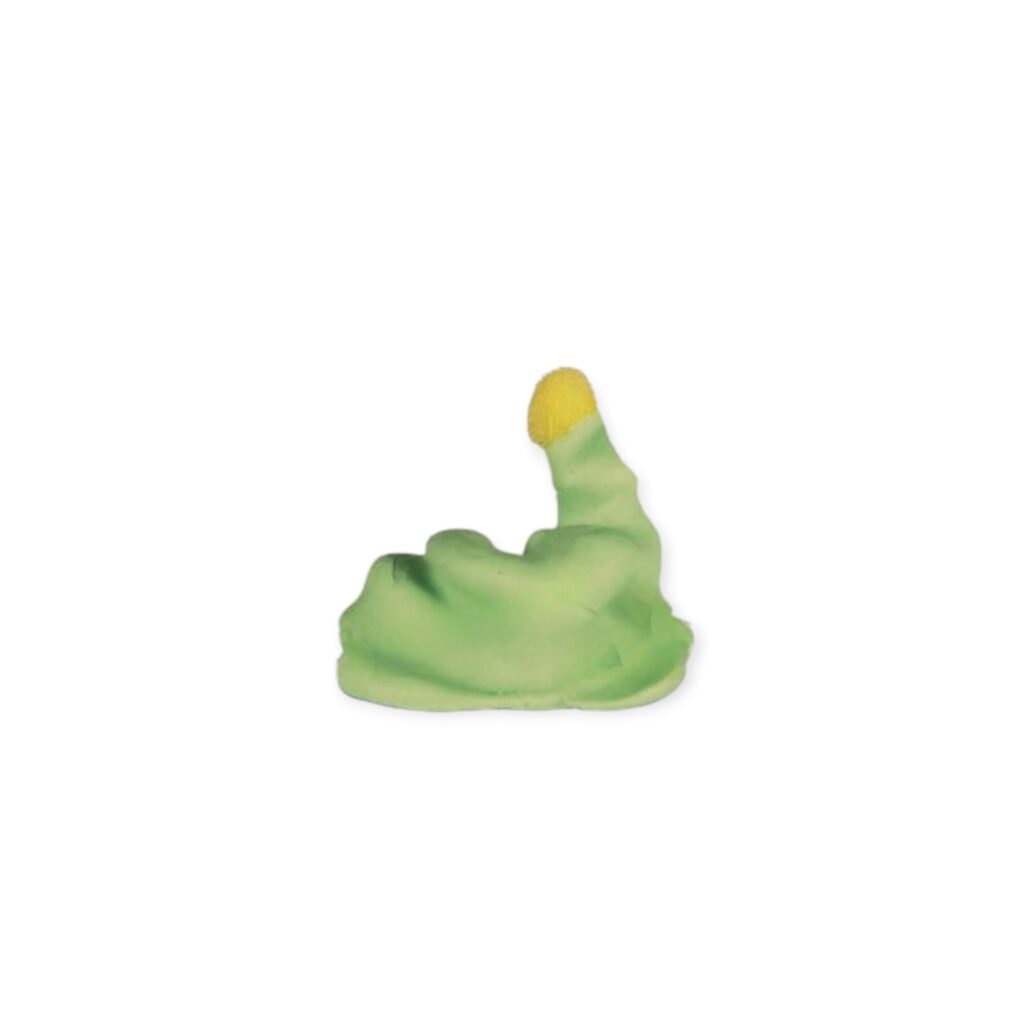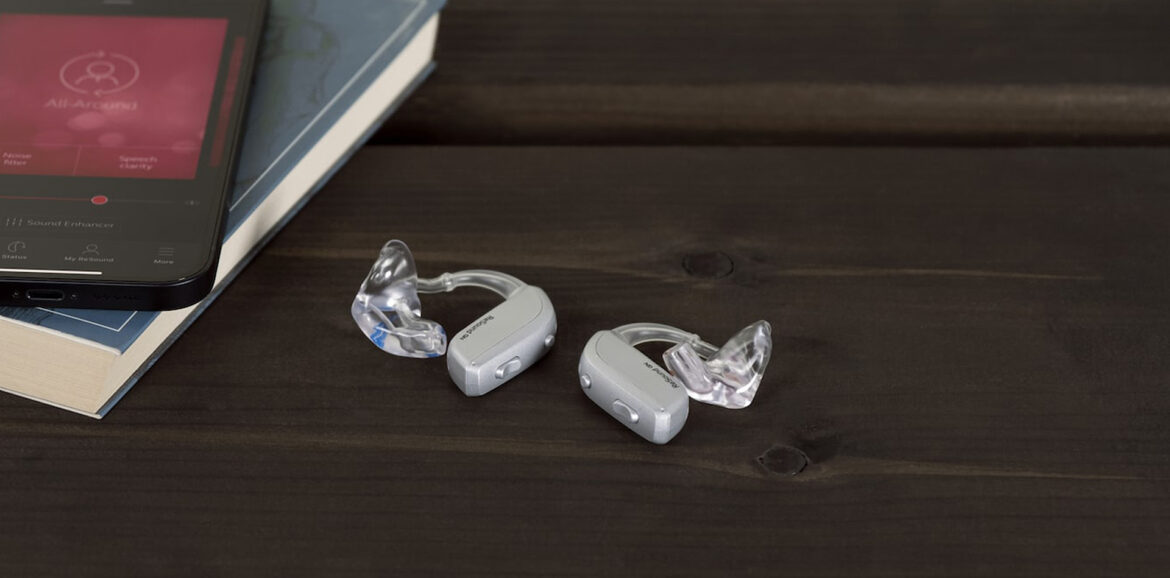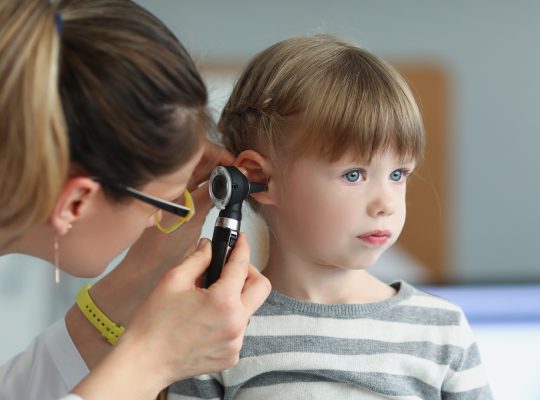When you get a hearing aid fitted, you quickly hear the word earpiece. While that may sound small, it is one of the most important parts of the whole hearing aid. The earmold determines how the sound enters your ear, how comfortable the device sits and how good it sounds.
Manufacturer ReSound has a clear vision of this. In their information for hearing care professionals, they explain what types of earmolds exist, how to choose the right one, and why that choice makes such a difference. We have translated that technical information into plain human language – so you can better understand what goes in your ear, and why.
What does an earpiece actually do?
An earmold (also called mould ) is the part of the hearing aid that fits in or behind your ear and ensures that the amplified sound enters the ear canal properly.
It provides:
- Sound conduction: the amplified sound from the device enters the ear through the earpiece;
- Closure: the more the ear is closed off, the less sound “escapes” (thus causing feedback);
- Comfort: the earpiece should stay in place without pressure or irritation;
- Acoustics: depending on the shape and ventilation also changes how natural the sound sounds.
Therefore, the choice of earmold is at least as important as the hearing aid itself.
The first adjustment – the basics must be right

A hearing care professional not only looks at your hearing loss during the initial fitting, but also at the shape of your ear. A good ear impression or 3D scan is crucial, because the ear mold will be made to fit you exactly.
ReSound emphasizes that a good initial fit is the key to satisfaction:
- the earpiece should be comfortable,
- Do not leak (i.e., no whistling sound),
- and properly match the amplification provided by the device.
Proper printing not only ensures wearing comfort, but also better sound quality.
The different types of earpieces
ReSound distinguishes several types of earmolds, depending on how the hearing aid amplifies sound. We explain the main ones below, with what they mean for you.
1. Standard mold
The classic among earpieces.
Inside it is an interchangeable receiver (the little speaker that amplifies the sound).
These moulds come in both hard (acrylic) and soft (silicone) material.
Advantages:
- The receiver is easy to replace (useful for repairs or maintenance).
- Suitable for different types of hearing loss.
- Comfortable and durable.
When to use:
For mild to moderate hearing loss and for people who want a reliable, classic earpiece that will last.
2. Hollow cavity mold
The name says it all: a hollow earpiece.
The design provides more ventilation and a lighter feel in the ear.
Advantages:
- Less “closed off” feeling (you can still hear some of your own voice).
- Suitable for an open fit, where the ear is not completely sealed.
- WaxGuard filter is easy to replace.
When used:
For mild to moderate hearing loss where comfort and airiness are important.
3. Encased mold
In these, the receiver is fixed in the earpiece. So you cannot replace it yourself.
The advantage: a nice, compact shape and optimal sound quality, even with more severe hearing loss.
Advantages:
- Beautiful, discreet design.
- Very stable sound reproduction.
- Suitable for high-performance devices (such as UP models).
When used:
For severe to profound hearing loss or when stability is important.
Ear pieces for BTE hearing aids.
If you use a behind-the-ear hearing aid (BTE), you have a choice between two main types:
1. Standard BTE earpiece
These are available with regular tubing or a thin “thin tube.”
The material can be hard or soft, depending on what is most comfortable.
2. Open channel mold (ROK).
A hollow earpiece that provides extra ventilation.
Ideal if you get stuffy easily or hear your own voice too loud.
The ROK mold can be used with a thin tube or standard tubing.
When does the audiologist choose what?
Audiologists look at several factors:
- Degree of hearing loss – the worse the loss, the more closure is needed.
- Shape of ear canal – not every ear is the same; with narrow ears, soft material is often more comfortable.
- Skin sensitivity – some people tolerate silicone better than acrylic.
- Feedback sensitivity – at high amplification, a closed earpiece is better.
- Personal preference – does someone want to keep the ear “free” or just maximum attenuation?
So it is always customized.
Material choice: hard or soft?
ReSound works with a variety of materials:
| Material | Features | Suitable for |
|---|---|---|
| Hard acrylic | Smooth, easy to clean, does not discolor | People who want firmness and have low ear moisture |
| Biopor 60 (semi-soft) | Flexible but sturdy, tear-resistant | People with motor limitations or robust hearing loss |
| Biopor 40 (soft) | Very flexible, comfortable | People with sensitive ears or irregular ear canals |
Soft material seals better and feels more comfortable, but is harder to clean. Hard material lasts longer and is more hygienic, but feels slightly stiffer.
Venting: breathing for your ear
Another important part of the earmold is the venting – small channels that let air through.
Venting prevents the ear from feeling “closed” and helps against the hollow sound of your own voice (called occlusion).
There are:
- No venting: for severe hearing loss, maximum amplification.
- Standard venting: small openings of 1 to 3 mm.
- Maximum venting: as open as possible.
- Semi-IROS or trench venting: special slots for bottom ventilation.
The hearing care professional will choose the right vent based on your hearing and the shape of your ear.
Additional options: small, but smart
- Drawstring: helps to easily remove the earpiece from the ear.
- Color marking: blue for left, red for right.
- Personalization: initials engraved on the earpiece, glitter, pictures, color and diamonds.
- Support frames: such as helix or skeleton locks, which ensure that the earpiece stays firmly in place.
It may seem like detail work, but these are exactly the things that make a hearing aid stay comfortable and secure – even when you’re active.
What else do audiologists pay attention to?
An experienced audiologist looks beyond just the earpiece.
They pay attention, for example:
- How well the earpiece seals without causing pressure sores.
- The acoustic length of the channel, which affects tone and clarity.
- The placement of the receiver so that the sound is properly directed.
- The balance between ventilation and amplification, as it determines whether the unit sounds comfortable.
All in all, that makes for a first adjustment that immediately feels good AND sounds good.
And then what is “the best” ear piece when first fitting?
There is no one-size-fits-all, but ReSound emphasizes: comfort and quality of impression are crucial.
A good earmold feels instantly comfortable, seals well and lets you hear what you want to hear effortlessly.
When first fitting, audiologists often choose a slightly softer and more open earpiece – it gives less pressure and feels more natural.
After a few weeks of wearing, the fit or seal can still be adjusted for best results.
Conclusion
An earmold may seem small, but it determines a large part of your listening comfort.
ReSound shows that every detail counts – from the type of material to the shape of the vent.
The right earmold:
- fits perfectly,
- sounds natural,
- and makes the difference between “I hear something” and “I hear good.”
So if your hearing care professional spends a lot of time choosing the right earmold when fitting, now you know why.
A good earmold is not an extra – it is the foundation of a good hearing aid.
Want to learn more about which earmold is best for your hearing?
Feel free to stop by Horend Goed – we’d love to help you with honest advice, a good fit and clear sound.









You must be logged in to post a comment.